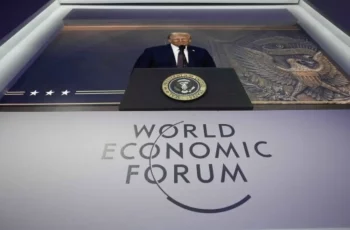
First of all, with Russia, although London reviews other threats.
On Monday, June 2, 2025, the British government released the lng-awaited Strategic Defence Review 2025 – a 140-page document that provides a vision for the development of the country’s armed forces, their use, and threats to the United Kingdom.
The preamble notes that “the threat we now face is more serious and less predictable than at any time since the Cold War. The UK faces war in Europe, growing Russian aggression, new nuclear risks, and daily cyber-attacks at home. Our adversaries are working more in alliance with one another, while technology is changing how war is fought. Drones now kill more people than traditional artillery in the war in Ukraine, and whoever gets new technology into the hands of their Armed Forces the quickest will have the advantage.”
It further elaborates that the UK undergoes “a landmark shift in our deterrence and defence: moving to warfighting readiness to deter threats and strengthen security in the Euro-Atlantic. As the UK steps up to take on more responsibility for European security, we must have a ‘NATO first’ defence policy and lead within the Alliance. The UK will become the leading edge of innovation in NATO.”
To put it short, the new strategy suggests four directions that should lead to some kind of synergistic effect:
- Move to warfighting readiness—establishing a more lethal ‘integrated force’ equipped for the future, and strengthened homeland defence.
- Engine for growth—driving jobs and prosperity through a new partnership with industry, radical procurement reforms and backing UK businesses.
- ‘NATO first’—stepping up on European security by leading in NATO, with strengthened nuclear, new tech and updated conventional capabilities.
- UK innovation driven by lessons from Ukraine—harnessing drones, data and digital warfare to make our Armed Forces stronger and safer.
- Whole-of-society approach—widening participation in national resilience, and renewing the Nation’s contract with those who serve.
The document preparation group was led by Lord George Robertson, former Labour Defence Secretary and NATO Secretary General, General Richard Barrons, former Commander of British Joint Forces Command , and Dr Fiona Hill from the academic circles. Fiona Hill also holds American citizenship and worked in the White House, coordinating policy towards Russia and Europe at the US National Security Council. All the three have rather Russophobic views, which greatly influenced the style and terms of the strategy.
Russia is mentioned in the document 33 times and in a clearly negative context.: “Russia is waging war on our continent,” “growing Russian aggression and new nuclear risks,” ” Russian aggression across Europe grows,” “Russia demonstrating its willingness to use military force, inflict harm on civilians, and threaten the use of nuclear weapons to achieve its goals,” etc.
Among the list of threats, the authors of the Review make an unequivocal conclusion: Russia is an “immediate and pressing threat.” This is followed by China, which is characterized as a “sophisticated and persistent challenge .” Other threats include North Korea (DPRK) and Iran, described as “regional disruptors.” At the same time, the strengthening of the alignment between Russia and China with these two countries is emphasized, which creates a new dynamic, and “emerging middle powers may be hostile to the UK interests.”
This is reminiscent of similar strategies and reviews in the United States, where the four above mentioned states have consistently appeared as threats since the time of Barack Obama. However, the section on technological challenges has the same sense of déjà vu: it lists quantum technologies, Hypersonic missiles, Enhanced precision weapons, Robotics and autonomy, Cyber threats, Artificial intelligence (AI), machine learning, and data science, Directed energy weapons and Engineering biology. The same can be said about the section on strategic competition. The Review refers to a change in priorities in the US approach and suggests following the same path, confirming the status of Washington’s junior military and political partner. And strategic competition, as noted, is directly related to the growing multipolarity, where, again, China and Russia are mentioned, which challenge the “rules-based international order” (the same mantra is repeated by all liberal globalists).
But these are, as a well-known saying goes, “the blossom which first comes out. Berries soon will have to sprout.” (that is, the reviewers give their forecast for the further development of events). “Based on current ways of war, if the UK were to fight a state-on-state war as part of NATO in 2025, it could expect to be subject to some or all of the following methods of attack:
- Attacks on the Armed Forces in the UK and on overseas bases.
- Air and missile attack (from long-range drones, cruise, and ballistic missiles) targeting military infrastructure and critical national infrastructure (CNI) in the UK.
- Increased sabotage and cyber-attacks affecting on- and offshore CNI.
- Attempts to disrupt the UK economy— especially the industry that supports the Armed Forces—including through cyber-attack, the interdiction of maritime trade, and attacks on space-based CNI.
- Efforts to manipulate information to undermine social cohesion and political will.”
If we consider specific vulnerabilities, the Review singles out the island’s dependence on undersea Internet cables (over 95% of global data is carried by them), reliance on the external food supplies (about 50%), dependence on natural gas from Norway (77% of UK’s gas imports come from that country), as well as the need for access to rare earth minerals (lithium, cobalt, graphite., nickel).
Alongside with reorganizing the structure of the armed forces in order to make the branches of the armed forces more mutually integrated, the Review provides for the development of the defense sector and the training of technical personnel. It was noted that the creation of large-scale platforms such as tanks and aircraft requires a cycle of at least five years, and the preparation of small systems such as drones can take several months.
It is planned to create a military counterintelligence department within the intelligence service, as well as merge the services responsible for cyber warfare and the electromagnetic spectrum.
UK’s partners in the hypothetical repelling of these threats are also identified. These are, first of all, the United States, the NATO countries, and then Ukraine.
As for the latter, the Review says that “This is a once-in-a-generation inflection point for collective security in Europe: securing a durable political settlement in Ukraine that safeguards its sovereignty, territorial integrity, and future security is essential to deter Russia from further aggression across the region. The UK is doubling down on its support t to Ukraine, stepping up its international leadership, and sustaining its unprecedented commitment of £3bn in military support to Ukraine every year for as long as it takes. The UK should explore further ways to sustain Ukraine’s defence industrial capacity and its security—for example, by increasing joint ventures between the UK and Ukraine’s defence industries and, once the immediate conflict is over, supporting Ukraine in accessing new markets for its defence industry, including for servicing and modernising legacy Soviet equipment in use by third countries. Defence should also learn from Ukraine’s extraordinary experience in land warfare, drone, and hybrid conflict in developing its own modern approach to warfighting.”
It is clear from the above passage that one should not harbor illusions about the sanity of the political elites of the West, which will continue its deliberate escalation, where Ukraine is at the same time a guinea pig in assessing new forms and means of armed conflict and the instrument itself against Russia.
However, the document highlights not only Europe and Ukraine. It also focuses on Britain’s interests in the Indo-Pacific region (Diego Garcia base), the Atlantic (especially the Falkland Islands, which Argentina calls the Malvinas Islands and considers its own), Gibraltar (the only actual British colony in Europe, whose territory Spain legitimately claims).
The document also shows an interest in producing a significant number of long-range missiles. And the recommendations indicate the need to increase the number of armed forces to one hundred thousand, of which 83 thousand will be regular troops, and the rest will be reservists. The quantitative indicators are mentioned because of the current problems with the staffing of the British army.
According to official data, from the end of compulsory national service in 1960 to 2025, the number of regular British troops has decreased by 74%. In the 12 months to 31 March 2025, there was a fall in the overall number of Regular Forces personnel, with around 1,140 more personnel leaving than joining. This was a lower net decrease than the previous year, when 4,430 more personnel left than joined.
In a February 2024 report on the readiness of the armed forces, the Defence Select Committee raised concerns about issues with recruitment and retention in the UK armed forces. In oral evidence to the Public Accounts Committee in April 2025, the Chief of the Defence Staff, Admiral Sir Tony Radakin, acknowledged the problem with recruitment and retention in the armed forces but said “it is easing”.
The British press described the new Review as an attempt to promote “military Keynesianism” to win support for defence spending.
And there’s a lot of money to be shaken out of taxpayers. Large expenditures are expected to be spent on the manufacture of missiles, the construction of new attack submarines and ammunition for them. The possibility of purchasing F-35A multi-role aircraft certified to carry the B61-12 gravity nuclear bomb, which has a maximum explosive yield of 50 kilotons, from the United States is also being considered. A total of 15 billion pounds will be invested in modernizing the production of nuclear weapons. Given the vulnerabilities of British armored vehicles, as confirmed by the fighting in Ukraine, it is likely that new prototypes of tanks and armored vehicles will need to be created.
The Review also focuses on the training of a volunteer-led militia that will help protect airports, communications hubs and other critical national infrastructure facilities from unmanned aerial vehicles and other surprise attacks. In this, Britain has clearly followed the path of Poland and some other EU countries, which, in a panic, have already begun to create similar formations to “protect themselves from Russia.”
In general, at the diplomatic level, we should clearly expect some kind of demarche, if not from China with Iran and North Korea, then from Russia for sure, since London’s unfriendly behavior is now also reinforced by aggressive rhetoric and intentions.
However if you read between the lines and take into account the international and domestic political context, then this Review should cause alarm among the British themselves. The recent elections have shown that distrust of the current government is growing, and with it the possibility of secessionism in Northern Ireland and Scotland. Given historical precedents, Britain’s armed forces can be used internally to quell unrest. And the symptoms of possible civil unrest in the United Kingdom are becoming more noticeable every day.










Comments